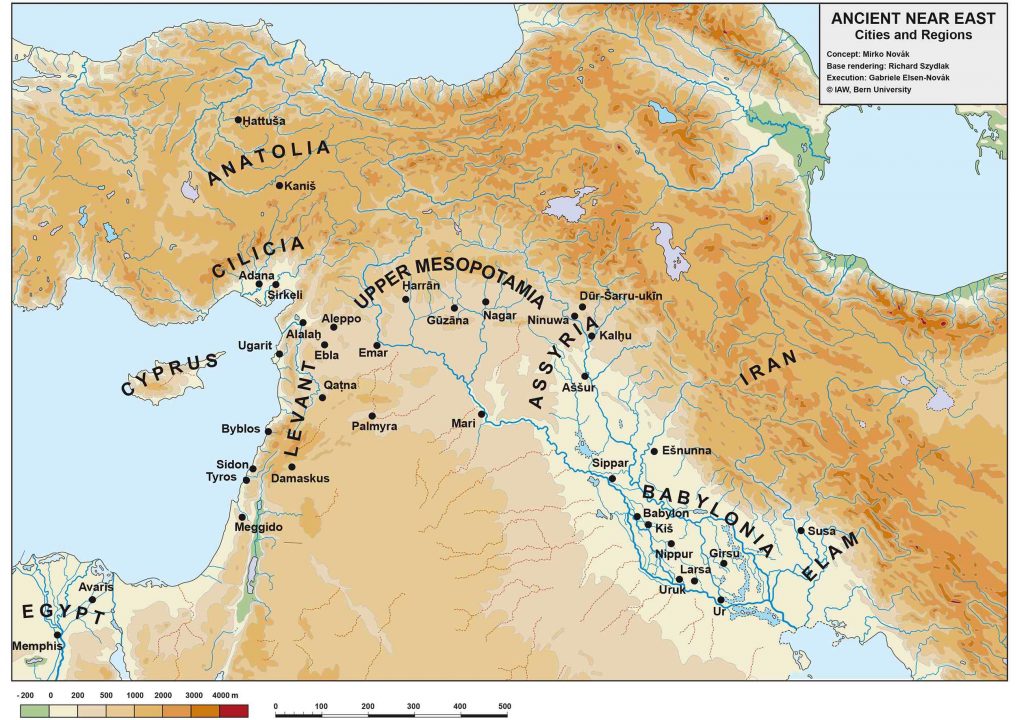Studying Ancient Near Eastern Archaeology
Topic:
Ancient Near Eastern Archaeology deals with the social, economic, cultural and historical circumstances in Ancient West Asia (“Alter Orient”) based on archaeological research. Geographically the field of research primarily includes modern-day Iraq, Iran, Syria, Turkey, the states on the Arabian Peninsula, the Levant as well as Cyprus and the South Caucasus. For a long time, the focus was on Mesopotamia, the cultural region along the lower course of the rivers Euphrates and Tigris. For several decades, the focus has increasingly shifted to include neighbouring areas as well.
In chronological terms the Ancient Near Eastern Archaeology (“Ancient Oriental Studies”) covers a time span that begins with the Neolithic period (from 10.000 BC onwards) until the end of the Persian period (ca. 330 BC). Later Periods, e.g., the Parthian and Sasanid Empires, are sometimes considered as well.
Archaeological finds and features provide the basic sources for Ancient Near Eastern Archaeology. Features are usually immobile structures, that are uncovered during an excavation or recorded in the area of excavation. These include remains of buildings (e.g., domestic houses, temples, palaces) and other structures (e.g., burials, terraces, installations like storage pits and kilns) as well as all kinds of sediments resulting from human activities (e.g., layers of debris, the content of refuse pits).
Archaeological finds are individual mobile artefacts, that can (ideally) be associated with corresponding archaeological features. Finds include ceramics, all kinds of tools and weapons, sculptures as well as seals and seal impressions (glyptic). For further study of those finds, it is especially important to record and interpret them adequately.
In reference to the historical periods (beginning with the late 4th millennium BC) the Ancient Near Eastern Archaeology is closely linked to the Ancient Near Eastern Philology, that deals with the languages and history of Old West Asia based on ancient written sources (clay tablets, inscriptions).
Methods:
The data that Ancient Near Eastern archaeologists work with (finds and features), is generated during archaeological excavations, field surveys or methods of remote sensing (e.g., the analysis of satellite images, geophysical measurements etc.). Another important basis for scientific work is the systematic analysis of (museum) collections and the critical analysis of already published data regarding a specific question.
For data analysis, different methods can be applied, depending on the specific set of questions: They range from art-historical and iconographic approaches to the use of geo-information systems all the way to the application of quantitative methods. As in other archaeological fields, the use of methods borrowed from natural sciences plays an increasingly important role, whether it be for determining age and material composition of finds or for reconstructing ancient technical processes. To explain archaeological phenomena, archaeologists often refer to concepts and models developed and used in other cultural and social sciences.
Research topics:
These are some of the diverse topics of research in Ancient Near Eastern Archaeology:
- The transition from a lifestyle of hunting and gathering to one of agriculture and settlement (“neolithization”)
- the emergence of complex societies, early cities (urbanization) and states
- settlement history (the development of individual settlements as well as entire settlement systems)
- Emergence and use of early information technology (tokens, seals and early writing)
- Economic history
- Art history
- Chronology (dating, localising certain aspects of material culture in time)
- Burial rites (concepts of afterlife, burials as indicators of social structures)
- The material culture of ancient empires (e.g., the Akkadian and Assyrian Empire, the kingdom of Mitanni, Elamites, Babylonians, Urartians)
- Archaeological building research
- Living conditions and daily life (e.g., gender relations)
- Landscape archaeology (emergence and transformation of cultural landscapes)
- Religious beliefs and ideologies
- Preservation of archaeological monuments
Study Programmes:
Ancient Near Eastern Archaeology can be studied in two different B.A. programmes, the “B.A. Archaeologies” and “B. A. Egyptology/Ancient Near Eastern Studies”. The master programme “Egyptology/Ancient Near Eastern Studies” can be studied since winter semester 2010.
B.A. Egyptology/Ancient Near Eastern Studies
M.A. Egyptology/Ancient Near Eastern Studies
Part of the study programme is the participation in excavations and museum internships.
Degrees:
The study programme is successfully completed with a Bachelor of Arts degree and consecutively with a Master of Arts. Following this, there is the possibility of a graduate programme that is completed with a PhD.
Career fields:
Ancient Near Eastern Archaeologists can find career opportunities at universities (research and teaching), research institutions, in science management and coordination, at museums as well as in publishing.
If you have any further questions regarding the study of Ancient Near Eastern Archaeology, please contact our student advisor:
If you have questions about which courses to take and how to register for exams, please contact:

